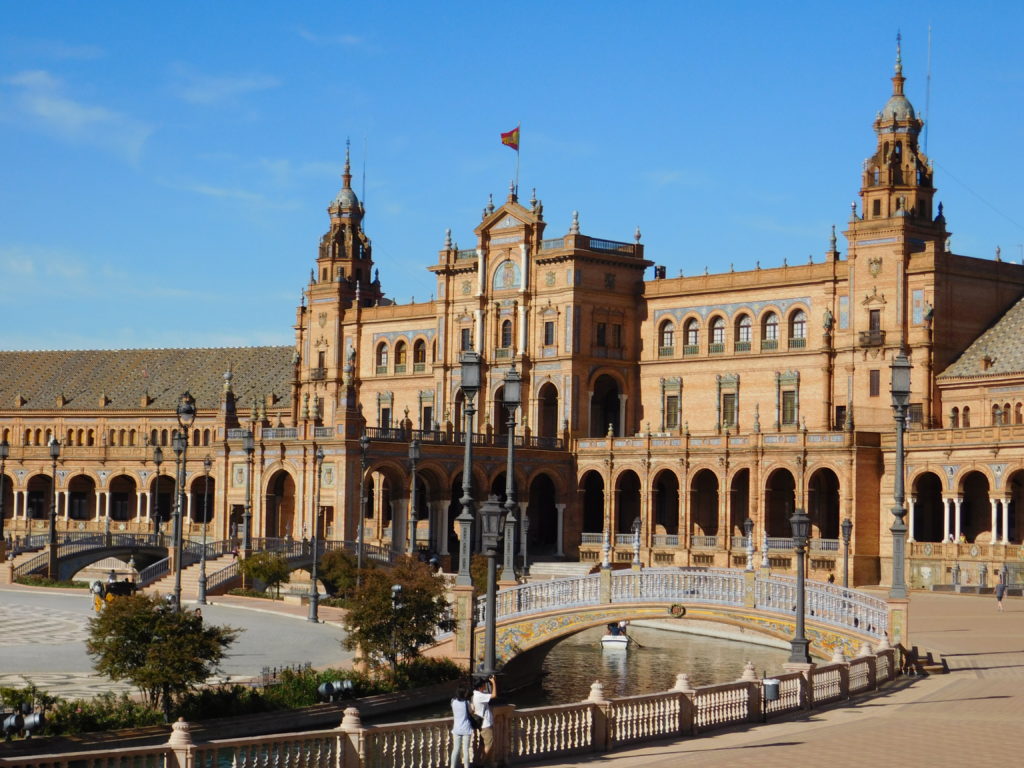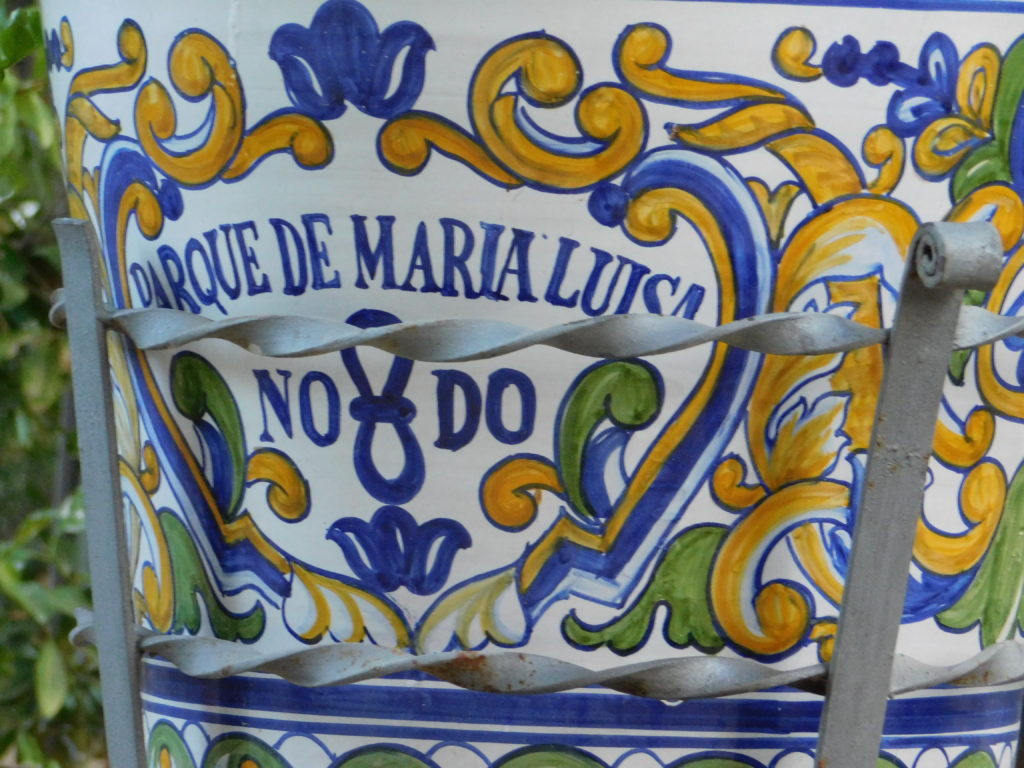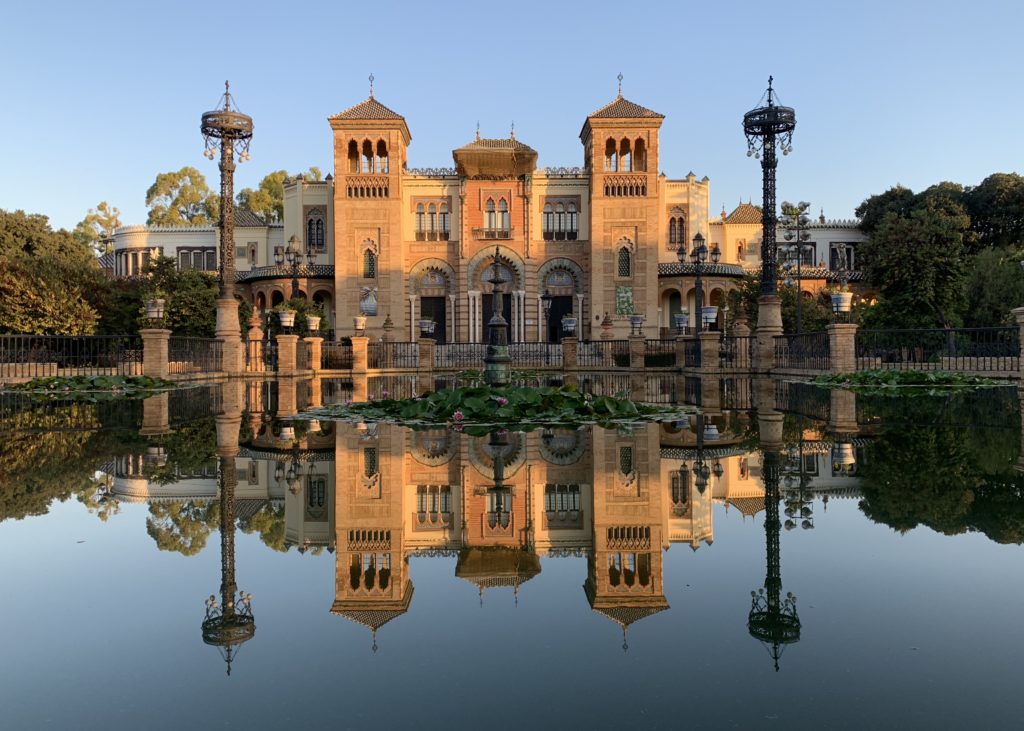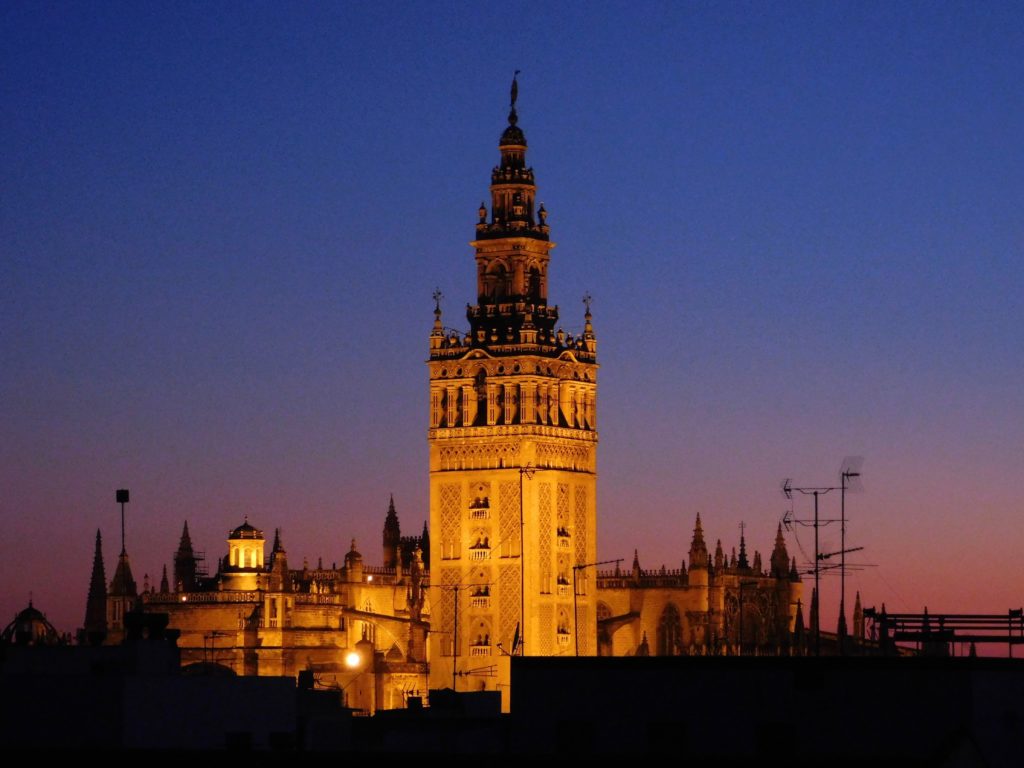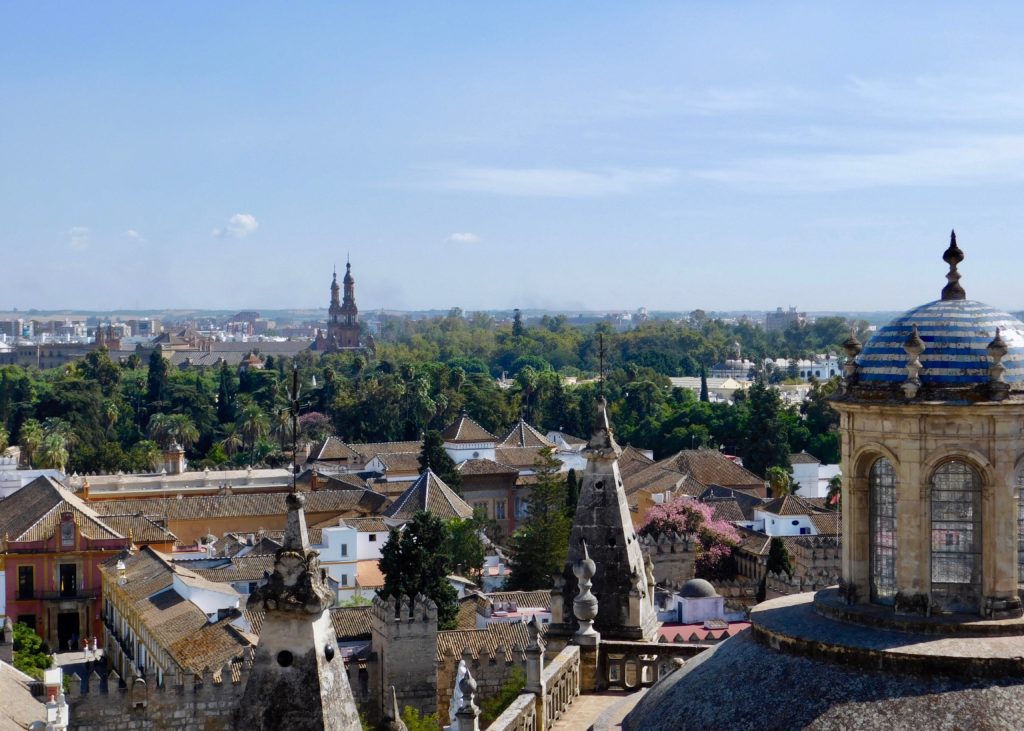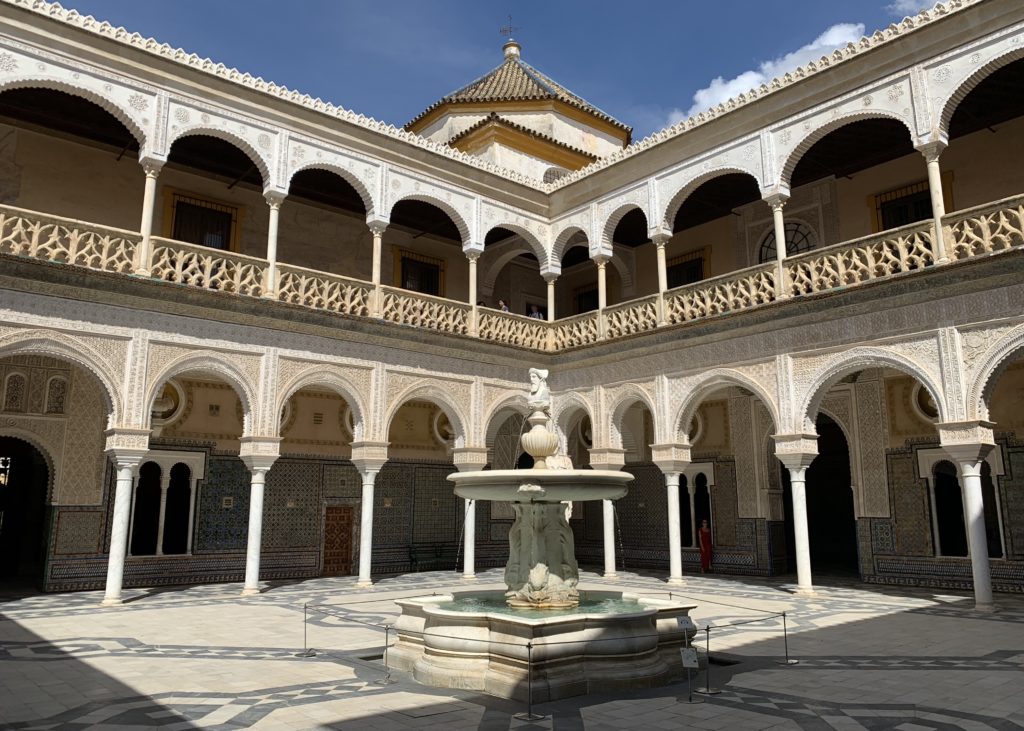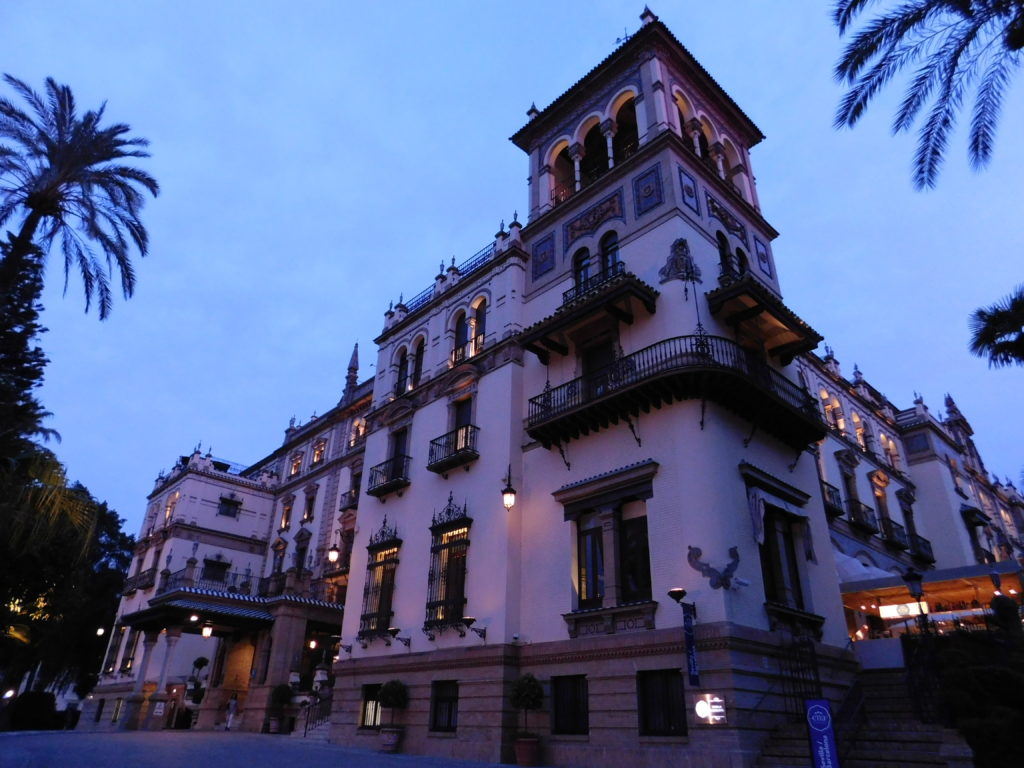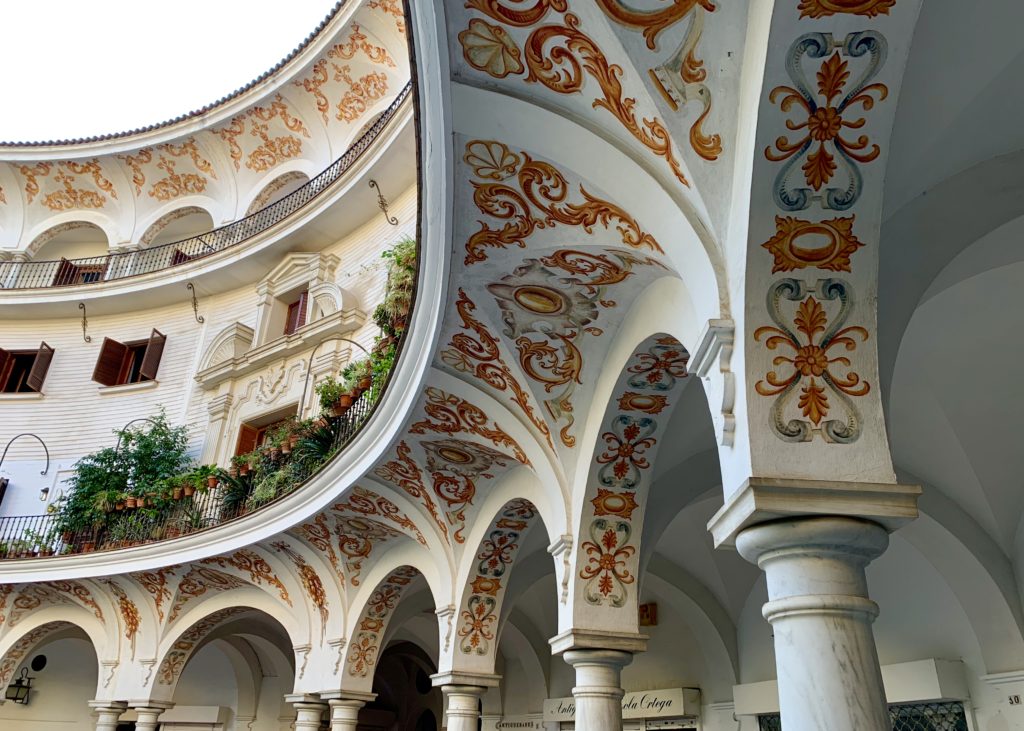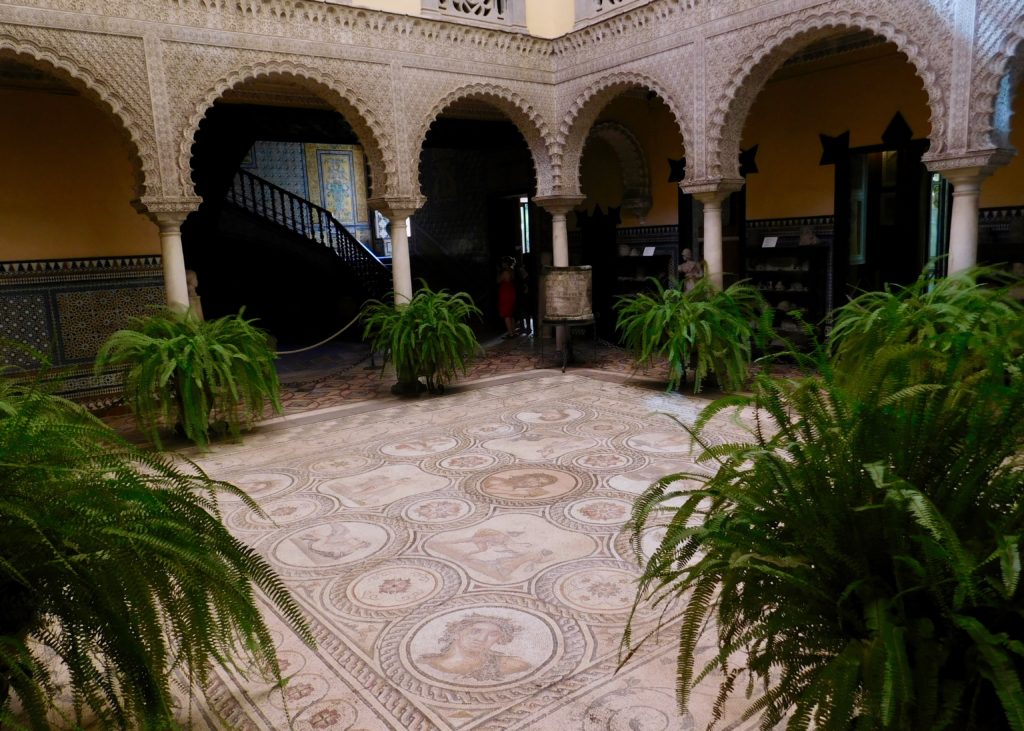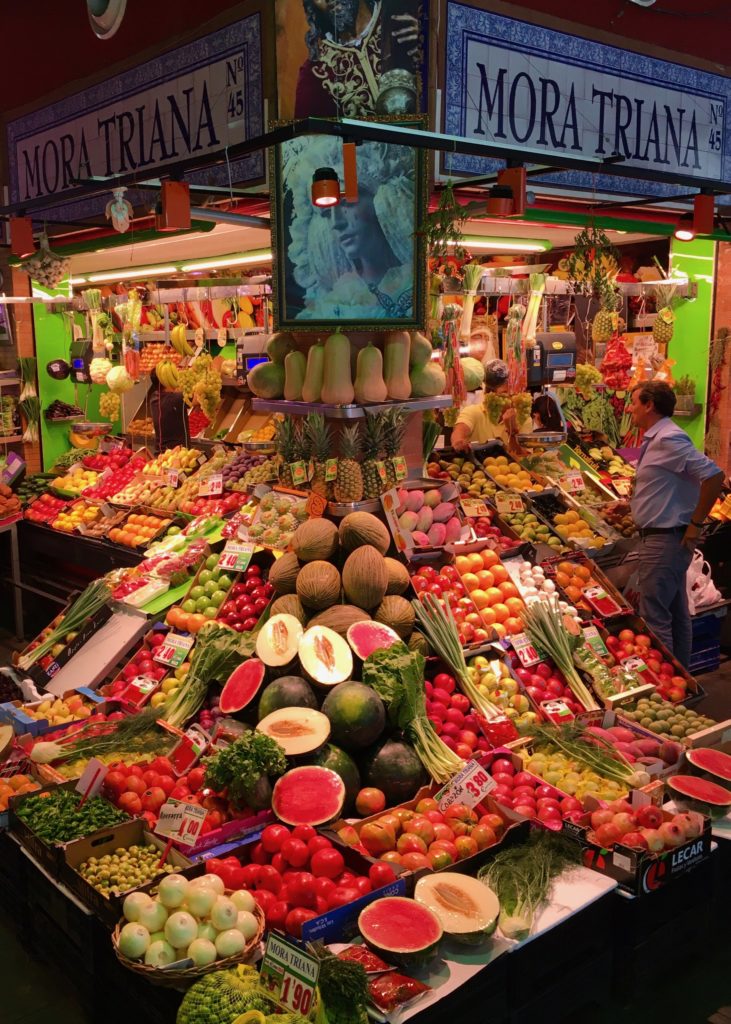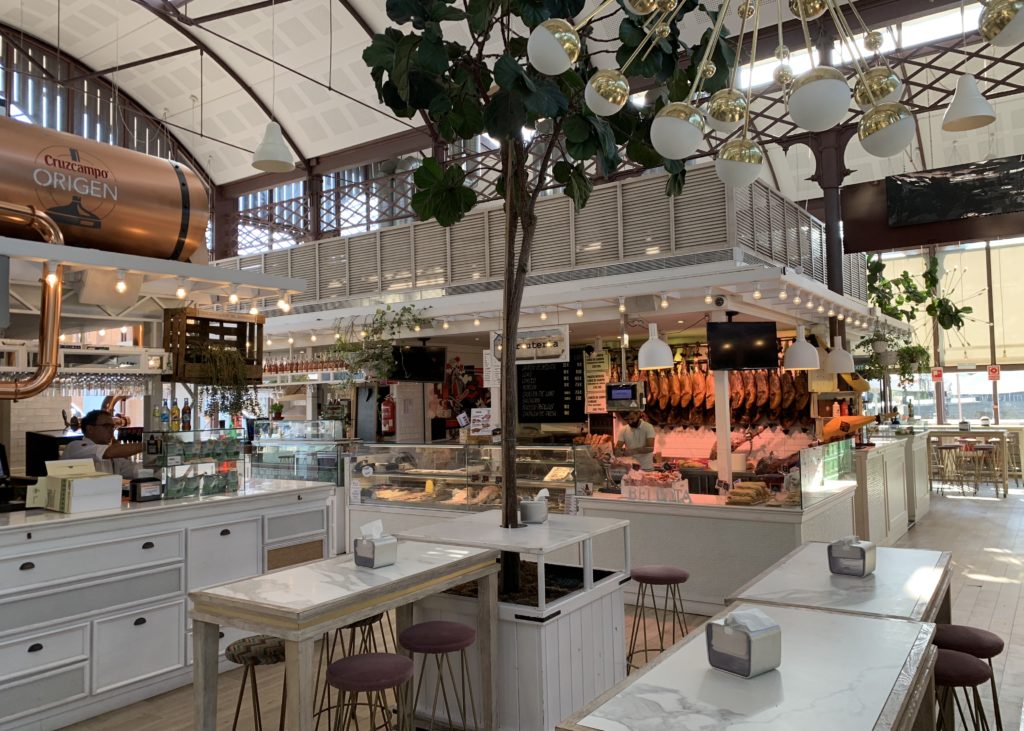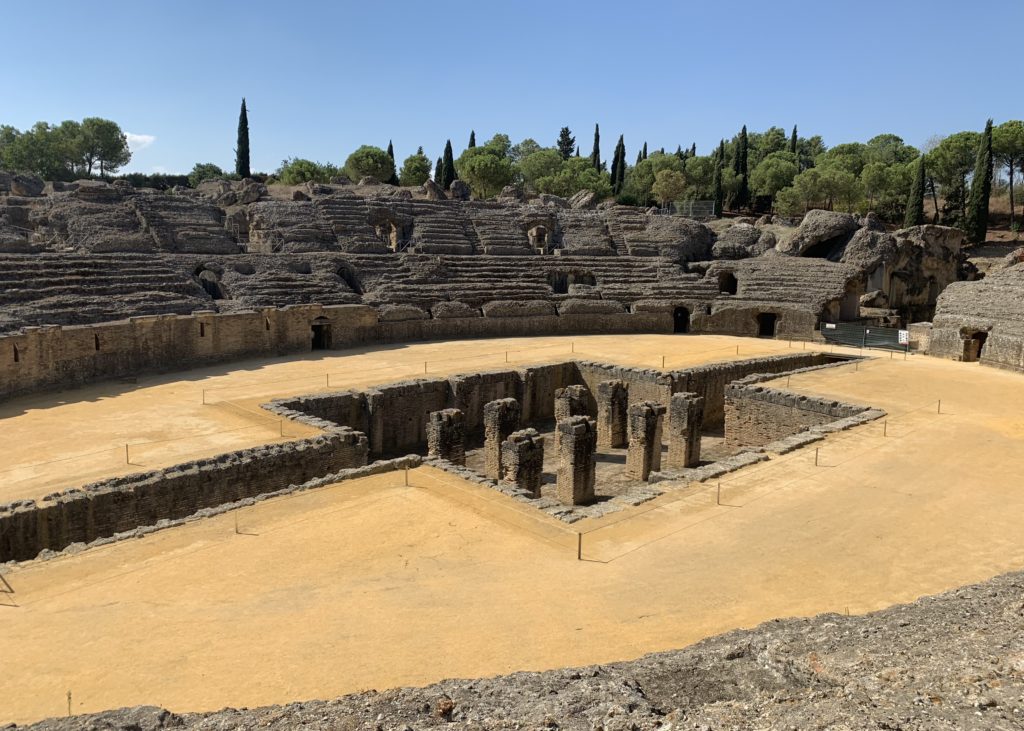My first time visiting Sevilla was only two days — just long enough to fall in love with what I found to be the most beautiful city I’ve ever seen. I knew I’d have to go back, so the next time I planned an entire week there.
What should you see if you’re planning at trip this enchanted city? A few of my favorite sights are below.
Plaza de España
Built for the 1929 Ibero-American Exposition, Plaza de España is one of Sevilla’s crown jewels. The half-moon-shaped Plaza is massive and upon closer inspection, you will find some of the most ornate painted tiles in Southern Spain. The alcoves along the inner ring of the Plaza illustrate stories from Spain’s major provinces and cities; the Granada alcove, for example, depicts the surrender of the Moors as Ferdinand and Isabella ride horseback just beyond the Gate of Granada. From the Plaza’s main corridor, there are four arched bridges leading into a central fountain. Each bridge is topped with matching, painted blue and white tiles that look more like antique vases than a handrail.
María Luisa Park
Just behind Plaza de España is Sevilla’s Moorish oasis, María Luisa Park. This half-mile long park includes dozens of tiled pavilions, ponds, fountains, sculptures and incredibly lush gardens and palm groves. The architecture throughout the park remains true to the city’s history and features unique Moorish and Mudejar styles.
One of my favorite activities to do in Sevilla is to take a morning run through this park. It’s well-shaded and a perfect escape from the blistering Spanish sun.
Real Alcazar
The Alhambra might be Spain’s most visited attraction, but I believe Sevilla’s Real Alcazar is over-looked. Sevilla’s Alcazar has dozens of rooms covered in zellij (tiled mosaics) and its carved plaster ceilings are nearly as impressive as the Alhambra’s, in my opinion. If you’re short on time and can’t make it all the way to Granada, this is a wonderful (and much less crowded) alternative.
During the summer, the Royal Gardens at Real Alcazar host a nightly outdoor concert series for a reasonable 7€. The week I was here, there was a brass quintet that played highlights from Don Quixote and Carmen — listening to these classics in one of Spain’s most magical locations was a night that I’ll never forget.
In recent years, Sevilla’s Alcazar has become well-known as the filming location for the Water Palace of Dorne from Game of Thrones. Even with the increased foot traffic, it hasn’t lost any of its charm.
La Giralda and Cathedral
La Giralda, the name given the Sevilla Cathedral’s bell tower, is one of the tallest and most iconic symbols of the city. The tower was originally built as a minaret for the Great Mosque of Sevilla, and many remnants of the former mosque (such as the Door of Forgiveness or “Puerta del Perdón”) are still visible in Europe’s largest Gothic Cathedral.
You can buy tickets to enter the Cathedral, see the ‘supposed’ final resting place of Christopher Columbus and the most ornate gold altar in Spain. If you desire, you can also climb to the top of the stair-less 104 meter (342 ft) tower — yes, there is only a spiral ramp to the top, which was designed so horses could be ridden to the top — where you’ll find breathtaking, 360-degree views of the city.
Casa de Pilatos
The Casa de Pilatos is one of the most beautifully preserved palaces in Sevilla, behind only Real Alcazar. This 15th century Andalusian palace wonderfully blends the ornate Mudejar and Italian Renaissance architectural styles; with tile work featuring over 150 different designs, it is one of the largest azulejo collections in the world. Casa de Pilatos is one of the most beautiful places in Sevilla and is a must-see during your time in Sevilla.
Hotel Alfonso XIII
Hotels may not always top a must-see list, but Alfonso XIII is a work of art. Built to accommodate foreign rulers and diplomats attending the 1929 Ibero-American Exposition, decorated in a similar Mudejar Spanish Revival style that is seen throughout Plaza de España and María Luisa Park. The hotel was also featured in the 1962 Best Picture, Lawrence of Arabia, where it filled in as a World War I officer’s club in Cairo, Egypt.
Plaza de Cabildo
Plaza de Cabildo is one of many hidden gems in Sevilla. It took three visits to Sevilla before I stumbled upon this colorful and mystical courtyard. While there’s nothing too exciting to see here, it’s 50 meters from the main cathedral but offers a cool and shaded retreat from the crowded streets. During your visit to Cabildo, skip the chintzy souvenir store and head to the antique store near the main entrance to the plaza.
Palace of the Countess of Lebrija
If you continue to be impressed by the Moorish and Mudejar styles of Sevilla, visit this ornate 16th century homes, filled with hundreds of priceless historical artifacts. The Palace of the Countess of Lebrija has an entire mosaic courtyard which was excavated from the Roman ruins, Italica, just outside of city.
Triana Neighborhood and Triana Market
Just across the iconic Puente de Isabel II bridge is Triana, one of Sevilla’s most colorful neighborhoods. Formerly know as the gypsy neighborhood, today’s highlights include the traditional Triana Market, as well as some of the best ceramic shops in Sevilla.
Mercado Lonja del Barranco
Directly across the river from the Triana Market is Mercado Lonja del Barranco, a more modern and trendy market comprised of independent shops and food stalls, ranging from gelato to sushi. This market has an amazing terrace overlooking the river, and in my opinion, beats Barcelona’s La Boqeruia and Madrid’s Mercado de San Miguel.
Italica Roman Ruins
The oldest site in Sevilla is just outside of the city and shows how deep the history is in this region of Spain. Italica is a former Roman city (now archeological site) that was founded in 206 BC. The ruins include a massive amphitheater and well-preserved mosaic floorings, like the one excavated and installed at the Palace of the Countess of Lebrija.
Like many other sites throughout the region, Italica captured the eyes of Game of Thrones directors and became the set for the Ancient Dragon Pits in Season 7.
I hope you have the opportunity to visit one my favorite cities soon. Be sure to leave yourself time to explore and relax — there is a ton to see in Sevilla so it’s easy to burn yourself out in the Spanish heat. When you do get a chance to kick back, however, you’ll soon realize that this Spanish oasis is one of the most relaxing and soothing cities you’ll ever visit.
Metropol Parasol (“Las Setas”)
In Plaza de la Encarnación lay Las Setas de Sevilla (“Sevilla’s Mushrooms”), Europe’s largest wooden structure offering the best sunset views in the city. You can go to the top of this structure for 3 Euros by following the underground ramp to the elevators, near the small shops at the bottom of the plaza. A small line will begin forming about 30 minutes before sunset — it moves quickly but I recommend getting here early. Once at the top, head up the stairs and find a spot to watch mother nature at work. Hang out for a bit, and grab a drink at the top; your 3 Euro admission fee entitles you to a 1 Euro discount on a beverage of your choice. While waiting for darkness to set set in, the city’s landmarks will slowly light up for the evening, which in my opinion, makes this view so spectacular.
